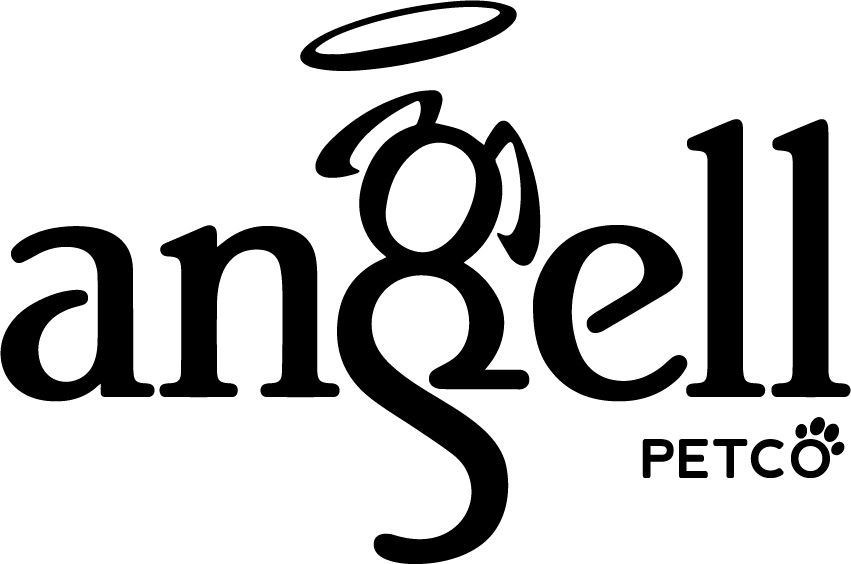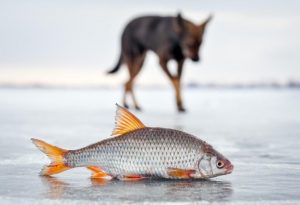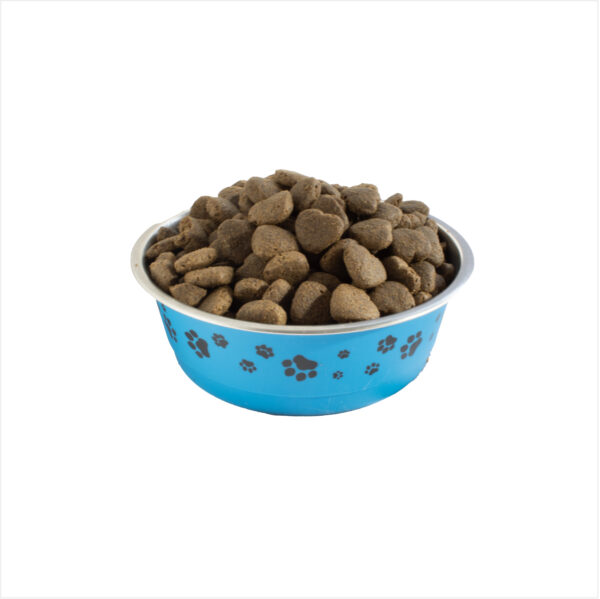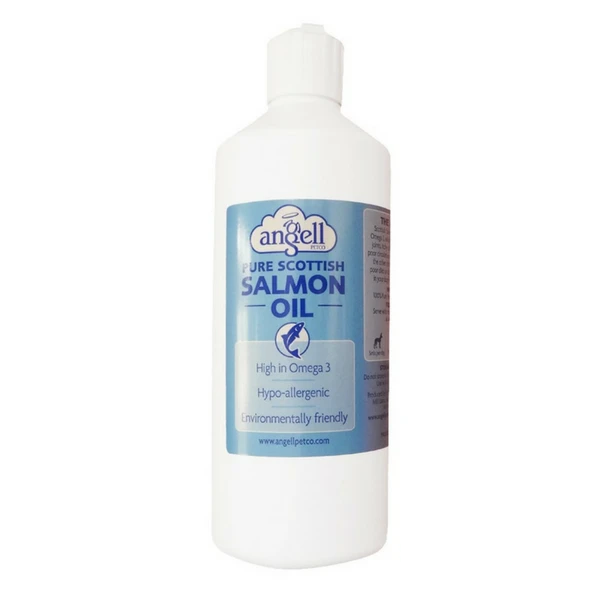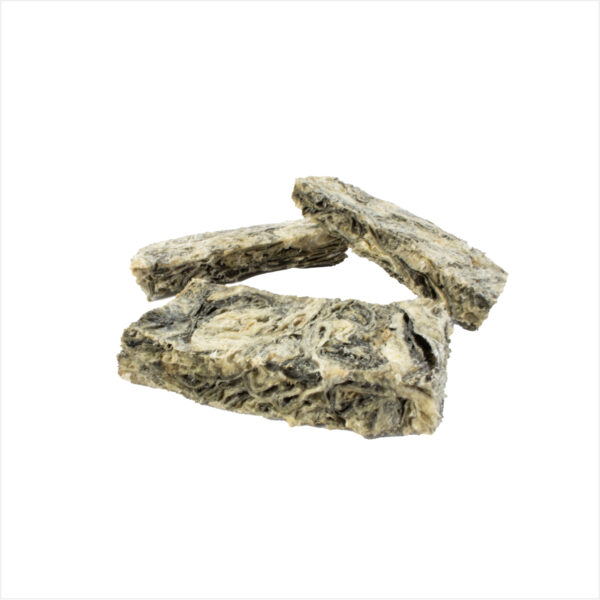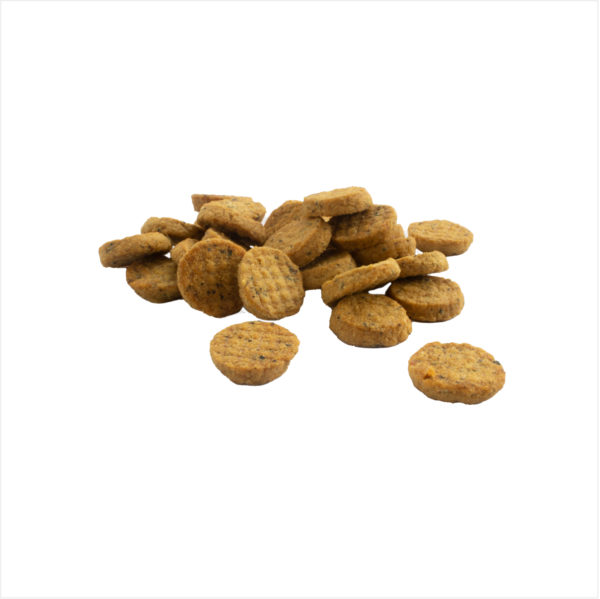You probably know the benefits of omega-3 and fish oil, such as its ability to fight depression, improve eye health and boost brain function.
Plenty of us use omega-3 supplements in the run-up to an important exam or board meeting in the hopes it will make our brains function better. Some of us may be in the habit of implementing more fish into our diets or taking an oil supplement each day to improve our physical and mental health over time.
But how does this fatty acid benefit our dogs? And are all types of fish containing omega-3 safe for canine consumption?
What Types of Fish Can Dogs Eat?
Dogs can — and definitely should — eat fish. As a healthy source of protein, fish is a no-brainer for most dog diets and poses a great alternative to chicken.
You won’t be hard-pressed to find pet foods containing fish as most pet brands offer some sort of fish variation. This is in part because dogs love fish — especially its briny, salty smell — and because fish is A-grade food for dogs meeting many of their nutritional needs.
Fish contains vitamin D and amino acids as well as omega-3 fatty acids, which work to benefit a dog’s skin, paws and coat. If your dog suffers from dry, itchy patches or cracked paws, fish could be a saving grace for their skin. Breeds that require regular brushing with dense, thick coats such as Alaskan Malamutes will find that omega-3 helps to restore their coat despite the hive of activity in this area.
Some popular types of fish common in dog diets are salmon, whitefish and herring.
The best types of fish for dogs to eat are usually shorter-lived species that have less risk of ingesting any harmful chemicals or substances.
According to the American Kennel Club, you should always introduce fish into a dog’s diet slowly if they’ve never had this type of protein in their diet before.
As with any change in ingredients, we always recommend mixing some of your old dog food with the new blend to make the change gradually. For example, mix ¼ of the new food with ¾ of the old food for a few days and monitor this change. If all is well, you’ll then be able to even out the ratio to ½ and ½. After a few more days, you can shift to using ¾ of the new food blend and only ¼ of the old food blend. Finally, you can switch your dog to the new food entirely.
In terms of monitoring throughout this period, you should be looking for any change in behaviour and routine, as well as firmness or glossiness of stools.
Which Fish Can Dogs Not Eat?
Despite the goodness of omega-3, there are certain types of fish that are toxic and dangerous to dogs.
Species like tuna and swordfish should not be fed to dogs as a result of high levels of mercury in the systems of longer-lived fish. Mercury leads to metal toxicity, which takes a heavy toll on a dog’s body.
Even overconsumption of tuna can make humans ill and we have a much faster reacting digestive system than dogs.
Giving your dog toxic fish is an easy mistake to make given the hype surrounding omega-3’s amazing benefits.
If you do make this error, it’s best to get in touch directly with your veterinarian for advice.
Depending on the size of your dog and the amount of fish consumed, your vet may inject or insert a stimulant into your dog to cause them to vomit and release the toxicity from the body. It’s likely that most larger dogs will only be monitored to review whether they need such treatment.
Common Risks to Dogs (Related to Fish)
The way you prepare your dog’s meals can cause stomach upset, even if the core ingredients are nutrient-dense.
Ideally, fish for dogs should be sourced from reputable pet retailers in a specialist food blend, treat or oil.
Feeding your dog small portions of your own fish dish can have all sorts of complications, including:
- Toxic Seasoning — Like to sprinkle garlic or onion seasoning on your salmon? Both garlic and onions are toxic to dogs and even in powder form can have an adverse effect on digestion. If you’re eating pre-prepared fish there could be traces of these ingredients, even if not stated on the packet.
- Bones — Cooked bones in any meat or fish can splinter resulting in serious damage to your dog’s mouth and throat, as well as run the risk of compromising intestinal activity. While you might have the diligence to pick out any unwanted bones, dogs won’t. The way dogs receive and chew food is more primal — they’re likely to consume the bone without realising. Most human food is labelled with a disclaimer such as “some bones may remain”. Dog food has been through a more rigorous process to ensure zero bones are included.
- Excess Oil — While fish oil is nutritious and great for the appearance of a dog’s skin — more on that later — eating fish with too much cooking oil can spell bad news for a dog. Ingesting too much oil at the least can give your dog diarrhoea. Some of the worst side effects include blood clotting, weight gain and reduced immune system function.
- Raw Fish — Feeding your dog raw meat and fish is debatable. While dogs can stomach raw foods, these raw items run the risk of carrying salmonella and listeria, as well as parasites. If you’re unsure, stick to cooked dog food or find a happy medium with our gentle cooking process.
The Best Fish Products for Healthy Dogs
We recommend that fish is included in the diets of all your dog’s but especially so, if your pet requires a hypoallergenic diet or has a sensitive stomach. The main benefit of fish in dog diets is that it helps aid digestion and improve overall health. You’ll start seeing the benefits of incorporating fish almost instantly through the reparation of your dog’s coat.
As such, the standard of the fish foods you buy should be high to ensure your dog receives the maximum benefit. Not all fish products are created equal. For best results, make sure you’re buying food that uses fresh fish and a gentle cooking process to get the most natural form of fish possible — such as our products that use locally caught fresh fish. We use a world’s first cooking process that starts with fresh human-grade ingredients that are cooked in small batches at a low temperature. This patient process ensures that every bag of Angell PetCo dog food contains as much nutritional goodness as possible. This process is unlike any other supplier’s in that it starts with goodness and ends with goodness to give dogs the best diet possible.
What’s more, you should steer away from foods marked with “fish derivatives” as this vague term can indicate low-grade ingredients. To make sure you’re getting a good quality fish product, you should look for fish as the main ingredient. Fish should be marked with something clear such as “fresh salmon”.
Fish Kibble
Kibble is a generic term for dry dog food, of which there are plenty of fish flavours. Although kibble presents an amazing way to keep your dog’s digestion uniform as well as keep a close eye on portion control, many manufacturers of kibble will overcook the ingredients or use sub-par produce in an effort to mass-produce products.
We recommend using a kibble that has no artificial preservatives, flavourings, and is gluten-free.
Our kibble uses a world’s first cooking process to ensure the finished product contains as many nutrients as possible. We cook small batches on low heat using fresh, A-grade ingredients to achieve this.
We sell fish kibble as part of our Superior Adult, Superior Puppy and Superior Sensitive ranges. Both our Superior Adult Complete and Superior Puppy Complete contain fresh salmon that is strictly sourced from Scotland.
Despite its amazing health benefits, salmon can be too rich for dogs with sensitive stomachs. In this case, trout is a great alternative that is still high in omega 3 and is more palatable. Our Superior Sensitive Complete blend is a great example that uses fresh trout as a key ingredient.
Salmon Oil
Not all oil is bad for dogs.
In fact, some oils are essential for the creation of smooth skin and a healthy coat, as well as improved eye health and joint movement.
Hypoallergenic salmon oil is one of the easiest ways to see the benefits of fish in your dog’s diet.
Again, our salmon oil is made from Scottish salmon ensuring we’re starting with the same high-quality ingredients as in our foods.
This pure form of omega-3 fatty acid will act much faster than any form of fish in dried foods or treats. So, if your dog is suffering from dry, itchy patches or issues that come with old age like stiff joints and poor circulation, you should immediately start with salmon oil and then work to improve your dog’s diet.
Salmon oil is incredibly effective for mature dogs, yet it’s also recommended for puppies. Just as it does in ageing dogs, salmon oil helps to aid cognitive development, promote healthy immune systems, good gut health and a strong foundation for healthy joints.
You could see results in three to four weeks with consistent use of salmon oil.
Simply include a few drops of salmon oil in your pet’s food to get started. In most cases, salmon oil will encourage your dog to eat their food even if it’s a foreign ingredient since most canines are instinctively attracted to the fishy smell.
Fish Skin
A little-known dog treat is fish skin.
This guilt-free snack is great for your dog’s dental health, as well as for weight management.
As a natural fish product, fish skin contains high amounts of omega-3 and protein while being low in fat. While you’ll still need to monitor the amount of fish skin given to your pet, you won’t need to be as vigilant as with other types of treats.
Fish skin is a great treat alternative for both small and large dogs. For different breeds, we sell modest-sized fish skin tubes and fish skin minis as well as fish skin giant slices.
You can source fish skin from most pet stores if you look hard enough but buying this ingredient in bulk can often be difficult and expensive. On our website, you can buy in bulk and even opt for recurring orders so you never run out of additive-free treats.
Salmon and Kelp Cookies
Small dried fish treats are great for training and will reward your dog in more than one way.
Our salmon and kelp cookies contain 94% salmon ensuring your dog gets plenty of omega-3 and essential proteins in between meals.
Natural dog treats like this won’t leave your pet feeling sluggish, overly full or bloated.
Most generic dog treats are made from a complex blend of ingredients — some good, some bad — and can be high in calories, allowing your dog’s daily intake to quickly add up. Most of our treats have a maximum of two to three ingredients to keep things simple and healthy.
Since the ingredients in our salmon and kelp cookies are all-natural, these treats are hypoallergenic so dogs with sensitive stomachs can also enjoy them.
If you want to mix things up, we also sell salmon and potato cookies, as well as natural redfish skin treats giving you plenty of fish options to play with.
Buy any of our fish products in bulk on a recurring basis with free delivery. If you choose to buy in bulk, we allow you to delay the payment with zero per cent interest to make natural dog diets as easy as possible.
